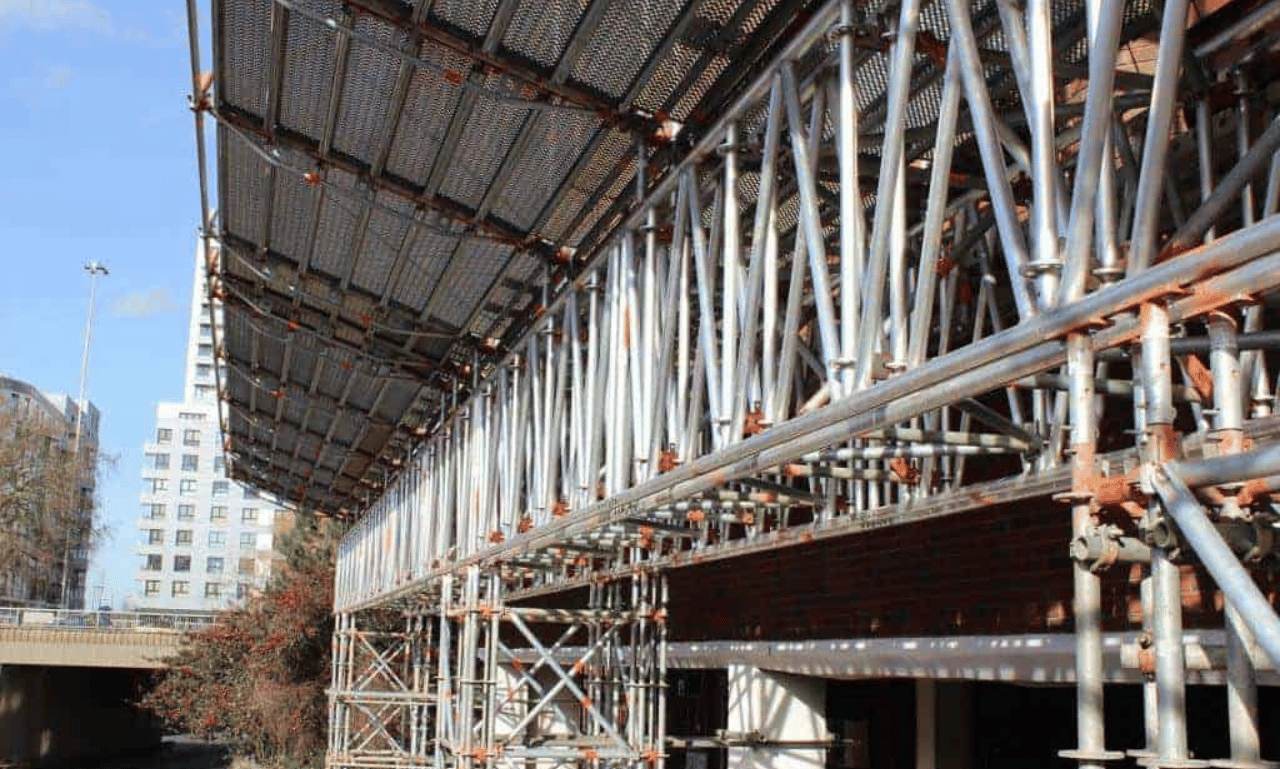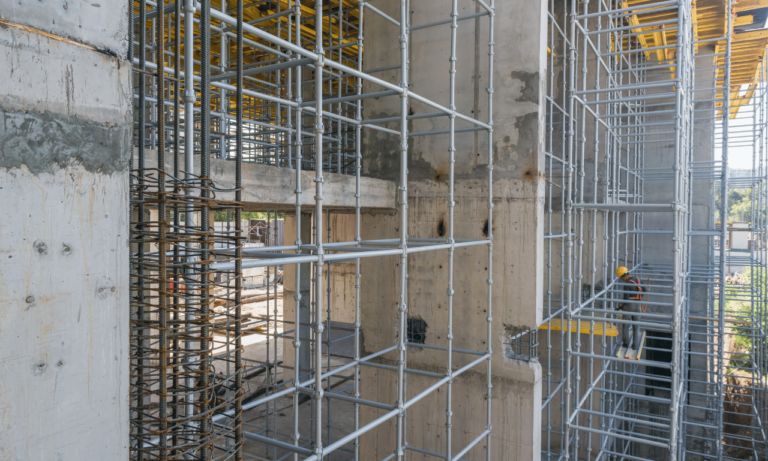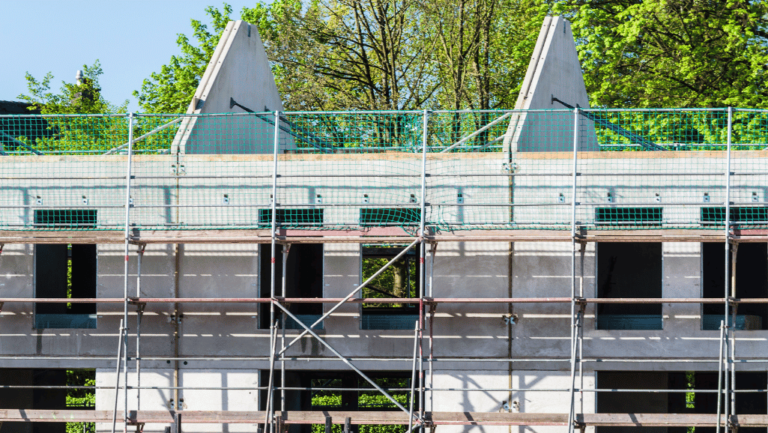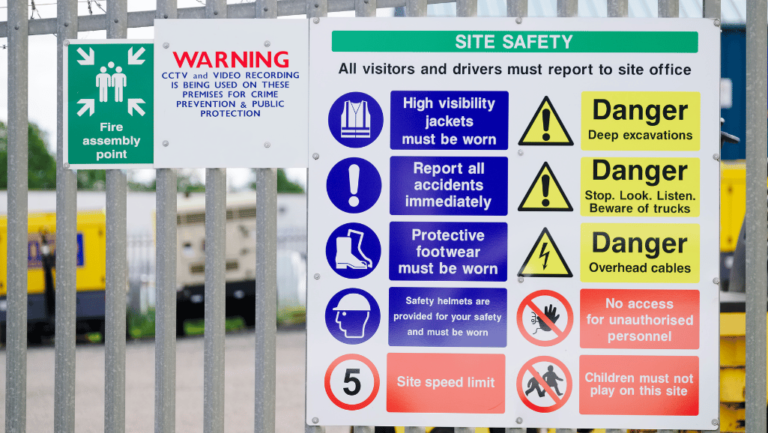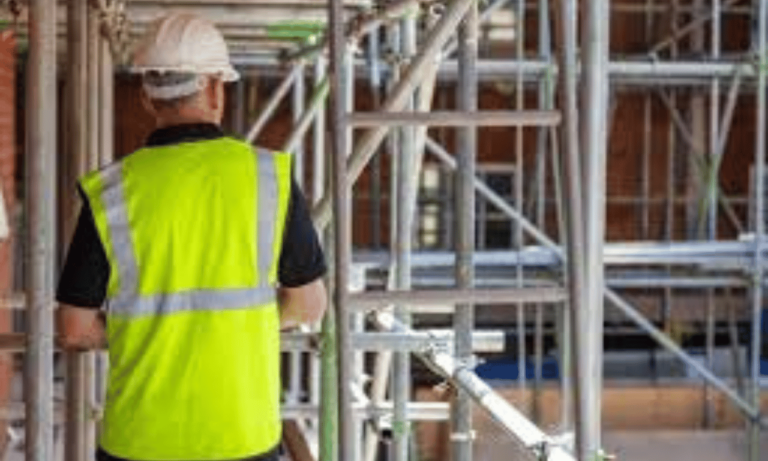Phone:
(+65)8319-0742
Welcome to our comprehensive guide on scaffold beams and bridging solutions for ensuring safety on construction sites. As construction projects become more complex and challenging, it is crucial to prioritize safety at every stage. Scaffold beams and bridging systems play a vital role in creating a secure working environment and promoting project success.
Scaffold beams are horizontal structures that provide support and stability to scaffolding platforms. They are available in various types, dimensions, and materials, designed to meet different project requirements. Bridging systems, on the other hand, are horizontal or diagonal scaffold components that strengthen the structure and prevent movement or collapse.
In this article, we will explore everything you need to know about scaffold beams and bridging solutions. From understanding their different types and installation processes to selecting the right materials and finding reliable suppliers, we have you covered. Additionally, we will discuss the advantages of scaffold bridging systems and how they enhance safety on construction sites.
Whether you are a contractor, project manager, or construction worker, this guide will provide you with valuable insights to make informed decisions and prioritize safety on your worksite.
Key Takeaways:
- Scaffold beams and bridging systems are essential for ensuring safety on construction sites.
- Scaffold beams provide support and stability to scaffolding platforms.
- Bridging systems strengthen the scaffold structure and prevent movement or collapse.
- Understanding scaffold beam types, dimensions, and installation processes is crucial for successful implementation.
- Choosing the right scaffold beam materials is important to meet project requirements and enhance safety.
Understanding Scaffold Beams and Bridging
Scaffold beams and bridging systems play a vital role in ensuring safety and efficiency on construction sites. This section provides a comprehensive overview of scaffold beams and bridging, including their types, dimensions, materials, and benefits.
Scaffold Beams:
There are several types of scaffold beams, each designed for specific purposes and load requirements. Common types include:
- Standard Scaffold Beams: These horizontal beams are typically used as primary load-bearing elements in scaffold structures. They are available in various lengths and can withstand heavy loads.
- Lattice Scaffold Beams: These beams have a lattice structure, making them lighter in weight and ideal for applications that require less load capacity.
- Putlog Scaffold Beams: Putlog beams are used to provide support and bridging between two adjacent scaffolds. They are widely used in brickwork applications.
- Specialized Scaffold Beams: Specialized beams, such as adjustable span beams and cantilever beams, offer flexibility and adaptability in scaffold designs for challenging project requirements.
Bridging Systems:
Scaffold bridging systems are used to create safe working platforms between two scaffold structures. They provide additional support, stability, and access across the scaffolds. Bridging systems can be categorized into the following types:
- Putlog Bridge: This type of bridging system uses putlog scaffold beams to create a safe passage between two scaffolds. It is commonly used in brickwork and masonry applications.
- Ladder Beam Bridge: Ladder beams are used to create a bridge between scaffolds, providing a secure platform for workers to move between different levels. They are typically used in construction and maintenance projects.
- Board Bridge: Board bridges use scaffold boards as the bridging elements, creating a stable and secure walkway between two scaffold structures. They are versatile and widely used in various construction applications.
The benefits of scaffold bridging systems are significant. Not only do they enhance safety by providing secure access for workers, but they also improve efficiency by reducing time spent moving between scaffolds and improving overall productivity on construction sites.
Now that we’ve explored the basics of scaffold beams and bridging systems, let’s dive deeper into the installation process in the next section.
| Scaffold Beam Type | Application | Advantages |
|---|---|---|
| Standard Scaffold Beams | Primary load-bearing | High load capacity |
| Lattice Scaffold Beams | Lighter load requirements | Reduced weight for easier handling |
| Putlog Scaffold Beams | Bridging between scaffolds | Facilitates safe passage and access |
| Specialized Scaffold Beams | Challenging project requirements | Flexibility and adaptability |
Installing Scaffold Beams and Bridging Systems
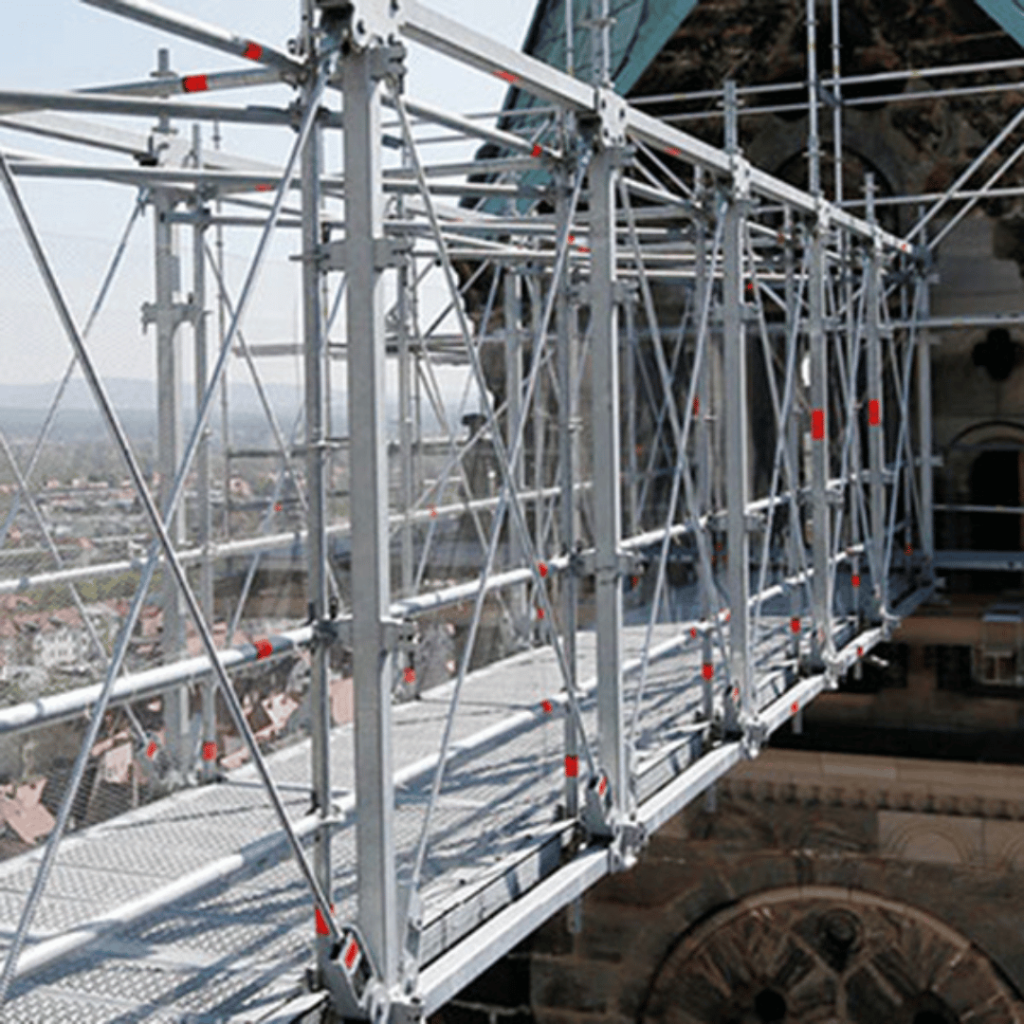
Proper installation of scaffold beams and bridging systems is crucial for ensuring the safety and stability of construction projects. By following the correct procedures and guidelines, construction teams can minimize the risk of accidents and create a secure working environment. Here are some essential steps and best practices for scaffold beam installation and bridging system setup:
1. Preparing the work area
Before starting the installation process, it is vital to prepare the work area. Clear any debris or obstacles that may hinder the placement of scaffold beams and bridging systems. Make sure the ground is level and stable to provide a strong foundation.
2. Checking the equipment
Prior to installation, inspect all scaffold beams and bridging system components for any signs of damage or wear. Look for cracks, dents, or bent sections that could compromise the integrity of the structure. Replace any defective parts to ensure optimal safety.
3. Erecting scaffold beams
Begin by erecting the scaffold beams according to the manufacturer’s instructions. Use proper lifting equipment to position the beams securely in place. Ensure that the beams are evenly spaced and properly aligned to provide structural stability.
4. Installing bridging systems
Once the scaffold beams are in place, install the bridging systems to enhance safety and accessibility on the construction site. Securely attach the bridging units to the scaffold beams, following the guidelines provided by the manufacturer.
5. Securing connections
It is crucial to securely fasten all connections between the scaffold beams and bridging systems. Use approved connectors to ensure stability and prevent any potential hazards. Regularly inspect the connections throughout the construction process to identify and address any signs of loosening or detachment.
6. Conducting load tests
Prior to allowing workers onto the scaffold and bridging systems, conduct load tests to ensure they can safely support the anticipated weight. Verify that the installation can withstand the maximum load expected during the construction process. Document the test results for future reference.
7. Regular inspections and maintenance
Once the scaffold beams and bridging systems are installed, implement a regular inspection and maintenance program. Inspect all components for signs of wear, damage, or deterioration. Replace any worn-out or damaged parts promptly. Keep detailed records of inspection findings and maintenance activities.
By following these installation guidelines and best practices, construction teams can create a secure and stable work environment, ensuring the safety of workers and project success.
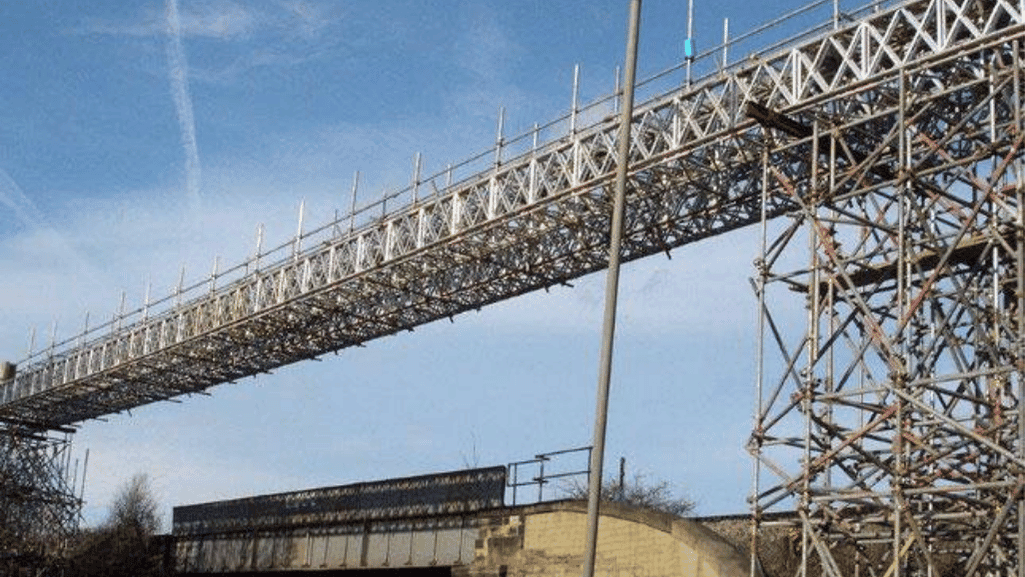
| Benefits of Proper Installation | Consequences of Improper Installation |
|---|---|
|
|
Choosing the Right Scaffold Beam Materials
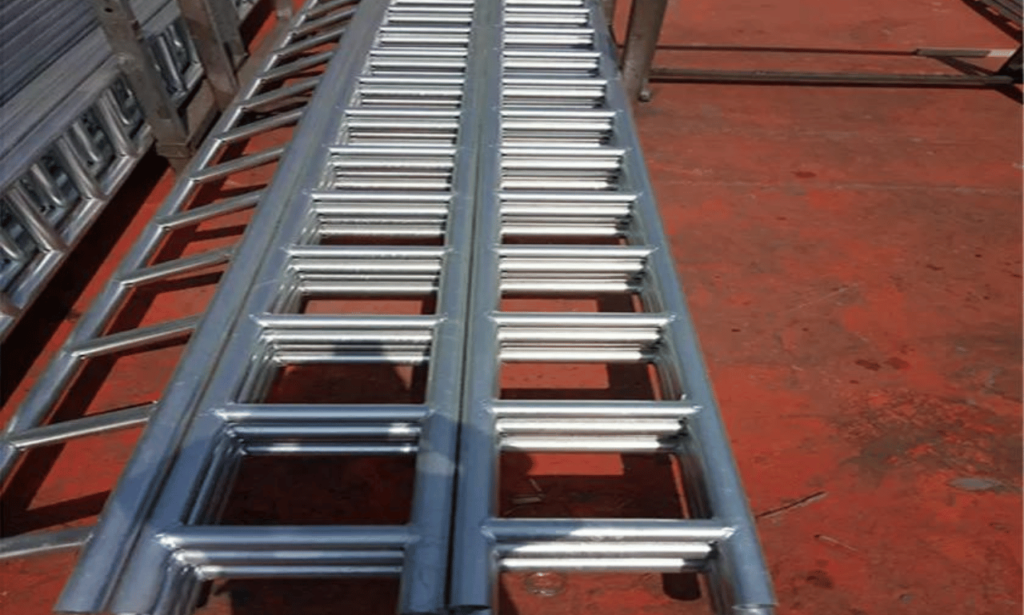
When it comes to selecting the ideal scaffold beams for your construction project, considering the right materials is crucial. The choice of scaffold beam materials plays a significant role in determining the overall strength, durability, and safety of the structure. In this section, we will explore different scaffold beam materials available in the market and discuss their pros and cons, enabling you to make well-informed decisions tailored to your specific project requirements.
Metal Scaffold Beams
Metal scaffold beams, such as steel or aluminum, are widely used in the construction industry due to their exceptional strength and load-bearing capacity. Steel scaffold beams, known for their durability and resistance to harsh weather conditions, are suitable for heavy-duty applications. On the other hand, aluminum scaffold beams are lightweight and corrosion-resistant, making them ideal for portable and temporary structures.
Wooden Scaffold Beams
Wooden scaffold beams have been used in construction for centuries. They are known for their availability, affordability, and ease of handling. Wooden scaffold beams offer good insulation properties and are relatively lightweight, making them suitable for smaller projects and temporary structures. However, they may require regular maintenance and are vulnerable to moisture, pests, and fire.
Composite Scaffold Beams
Composite scaffold beams have gained popularity in recent years due to their unique combination of strength, durability, and versatility. These beams are typically made from a combination of materials, such as fiberglass and resin, resulting in a lightweight yet robust structure. Composite scaffold beams offer excellent resistance to corrosion, fire, and moisture, making them suitable for a wide range of applications.
When choosing scaffold beam materials, it’s essential to evaluate your project’s specific requirements, including load-bearing capacity, environmental conditions, and budget constraints. Collaborating with experienced suppliers and manufacturers can also provide valuable insights and guidance on selecting the right scaffold beam materials for your construction project.
Now that we have explored the various scaffold beam materials available, let’s move on to the next section, where we will discuss the advantages of scaffold bridging systems.
Advantages of Scaffold Bridging Systems
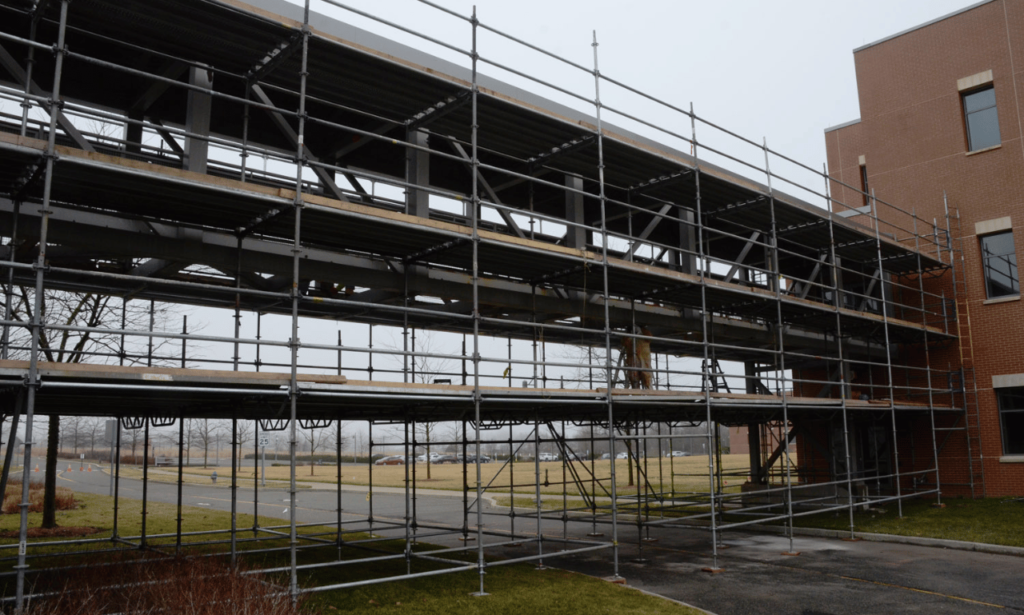
Scaffold bridging systems offer numerous advantages that contribute to safer working conditions and increased productivity on construction sites. These innovative solutions provide additional support and stability, ensuring the secure and efficient completion of projects.
Enhanced Safety
Scaffold bridging systems significantly improve safety on construction sites. By connecting scaffolding sections and creating a continuous platform, these systems eliminate the gaps between individual scaffold beams. This helps prevent accidents caused by gaps or misalignments, reducing the risk of falls and injuries. Additionally, scaffold bridging systems improve overall stability, providing a safer working environment for workers at elevated heights.
Increased Efficiency
By eliminating gaps and creating a seamless platform, scaffold bridging systems enhance workflow efficiency. Workers can move more freely and easily across the scaffold, reducing the time required to reposition themselves. This increased mobility and accessibility to different areas of the construction site contribute to improved productivity and faster project completion.
Flexible Configurations
Scaffold bridging systems can be configured to meet the specific needs of different construction projects. Whether it’s a straight bridge or an option with adjustable angles, these systems offer flexibility in design and usage. This adaptability ensures that scaffolding can be easily customized to fit various architectural structures, improving accessibility and safety for workers.
Reduced Material Waste
With scaffold bridging systems, there is a reduced need for additional materials such as planks or boards to fill the gaps between scaffold beams. This leads to less material waste and better resource management, ultimately reducing costs and environmental impact.
To visually illustrate the advantages of scaffold bridging systems, refer to the table below:
| Advantages of Scaffold Bridging Systems |
|---|
| Enhanced safety by eliminating gaps and providing stability |
| Increased efficiency and productivity with seamless platform |
| Flexible configurations to accommodate different project requirements |
| Reduced material waste and improved resource management |
By incorporating scaffold bridging systems into construction projects, contractors can improve safety, efficiency, and resource utilization. These systems provide a reliable and secure foundation for workers, enabling them to focus on their tasks while minimizing the risk of accidents or delays.
Finding Reliable Scaffold Bridging Suppliers
When it comes to scaffold bridging, finding reliable suppliers is crucial for ensuring the safety and success of your construction projects. Working with reputable scaffold bridging suppliers can provide you with high-quality products, expert guidance, and efficient service. Here are some tips to help you find and select reliable scaffold bridging suppliers:
- Research and Evaluate: Begin by researching reputable scaffold bridging suppliers in your area. Look for well-established companies with a track record of providing reliable and safe solutions. Evaluate their experience, credentials, and customer reviews to gain insight into their reputation and the quality of their products.
- Range of Products: Consider the range of scaffold bridging products offered by suppliers. Look for suppliers who offer a comprehensive selection of scaffold bridging solutions, including different sizes, materials, and configurations. This ensures that you can find the perfect fit for your specific project requirements.
- Quality Standards: Ensure that the scaffold bridging suppliers you consider adhere to stringent quality standards. Look for suppliers who follow industry regulations and have certifications such as ISO 9001, which demonstrates their commitment to quality management systems.
- Customer Support: Assess the level of customer support provided by scaffold bridging suppliers. Look for suppliers who are responsive, knowledgeable, and offer technical assistance when needed. This ensures that you have access to expert advice and support throughout your project.
- Price and Value: While cost is an important consideration, it should not be the sole factor in your decision. Evaluate the overall value offered by scaffold bridging suppliers by considering factors such as product quality, customer support, and reputation. Choose suppliers that offer competitive pricing while maintaining high standards of quality and service.
By taking the time to research, evaluate, and select reliable scaffold bridging suppliers, you can secure the best solutions for your construction projects. Partnering with reputable suppliers ensures that you have access to high-quality products that enhance safety and efficiency on your worksite.
Enhancing Safety with Scaffold Beams and Bridging
When it comes to construction sites, safety should always be a top priority. Scaffold beams and bridging solutions play a crucial role in ensuring a secure working environment for construction workers. By adopting the right safety measures and investing in high-quality scaffold beams and bridging systems, construction projects can minimize the risk of accidents and protect the well-being of their workers.
Proper training is essential to enhance safety when working with scaffold beams and bridging systems. Construction workers should receive comprehensive training on the correct assembly, installation, and usage of these components. It is important to educate workers about potential hazards and safety protocols to follow, reducing the likelihood of accidents and injuries.
Regular inspections are another important aspect of maintaining safety on construction sites. Scaffold beams and bridging systems should be inspected routinely to identify any signs of damage, wear and tear, or structural issues. By addressing these concerns timely, companies can prevent accidents caused by faulty or weak scaffold structures.
Furthermore, regular maintenance of scaffold beams and bridging systems is essential for upholding safety standards. Companies should establish a maintenance schedule and conduct regular checks to ensure the structural integrity and stability of these components. Prompt repairs and replacements should be carried out whenever necessary to prevent any potential risks that may arise.
By emphasizing safety as a top priority and implementing the necessary measures, construction companies and workers can create a secure working environment. Investing in high-quality scaffold beams and bridging solutions, coupled with proper training, inspections, and maintenance, can significantly enhance safety on construction sites, reducing the risk of accidents and promoting a safe and productive work environment.
Expert Insights: The Importance of Safety Culture on Construction Sites
John Smith, a renowned construction safety expert, stresses the significance of establishing a strong safety culture in the construction industry. According to Smith, “Safety should be ingrained in the minds of every worker. By prioritizing safety and investing in the right tools and systems, such as scaffold beams and bridging solutions, construction projects can ensure the well-being of their workers and maintain a productive work environment.”
| Safety Measure | Benefits |
|---|---|
| Proper Training |
|
| Regular Inspections |
|
| Regular Maintenance |
|
Conclusion
In conclusion, scaffold beams and bridging solutions are vital components for ensuring safety and secure project success on construction sites. By providing support, stability, and enhanced working conditions, scaffold beams play a crucial role in creating a safe environment for workers. Additionally, bridging solutions further enhance safety by promoting efficiency and productivity.
Throughout this article, we explored the different types of scaffold beams and bridging systems, discussed their installation process, and highlighted the advantages they offer. Choosing the right scaffold beam materials and finding reliable scaffold bridging suppliers are crucial steps in ensuring high-quality and durable solutions.
Remember, safety should always be a top priority on any construction project. Regular inspections, proper training, and maintenance of scaffold beams and bridging systems are essential to mitigate potential risks and ensure a successful project outcome. By prioritizing safety and utilizing scaffold beams and bridging solutions effectively, you can create a secure and productive environment that leads to project success.
FAQ
What are scaffold beams?
Scaffold beams are horizontal structural elements used in scaffolding systems to provide support and stability. They are designed to bear the weight of workers, materials, and equipment on construction sites.
What is the purpose of scaffold bridging?
Scaffold bridging refers to the installation of additional horizontal components between scaffold beams, enhancing stability and safety. It helps distribute loads evenly and prevents excessive deflection, reducing the risk of structural failure.
What types of scaffold beams are available?
There are various types of scaffold beams, including steel scaffold beams, aluminum scaffold beams, and laminated scaffold beams. Each type offers different advantages, such as strength, lightweight construction, or resistance to corrosion.
What are the dimensions of scaffold beams?
Scaffold beam dimensions can vary depending on the specific requirements of the project. Common dimensions include lengths of 5 feet, 7 feet, and 10 feet, with widths and heights ranging between 9 inches and 14 inches.
Which materials are commonly used for scaffold beams?
Scaffold beams are typically made from materials such as steel, aluminum, or laminated wood. Steel scaffold beams offer high strength and durability, while aluminum scaffold beams are lightweight and corrosion-resistant. Laminated wood scaffold beams provide a cost-effective option with good load-bearing capacity.
How should scaffold beams and bridging systems be installed?
Scaffold beams and bridging systems should be installed following the manufacturer’s instructions and safety guidelines. It is crucial to ensure proper alignment and secure attachment to the scaffold frame. Regular inspections and maintenance are also essential to ensure their continued safety and performance.
What are the advantages of scaffold bridging systems?
Scaffold bridging systems offer several advantages. They enhance stability, minimize deflection, and improve load distribution, providing a safer working environment on construction sites. These systems also increase productivity by reducing downtime caused by structural issues.
How can I find reliable scaffold bridging suppliers?
To find reliable scaffold bridging suppliers, consider factors such as their experience, reputation, and product quality. Seek recommendations from industry professionals, check online reviews, and request samples or references before making a decision. It is important to choose a supplier that meets your specific project requirements.
How do scaffold beams and bridging systems enhance safety on construction sites?
Scaffold beams and bridging systems play a crucial role in enhancing safety on construction sites. They provide stability and support, minimizing the risk of accidents and structural failures. Proper installation, regular inspections, and maintenance ensure that scaffold beams and bridging systems remain safe and secure throughout the project.

